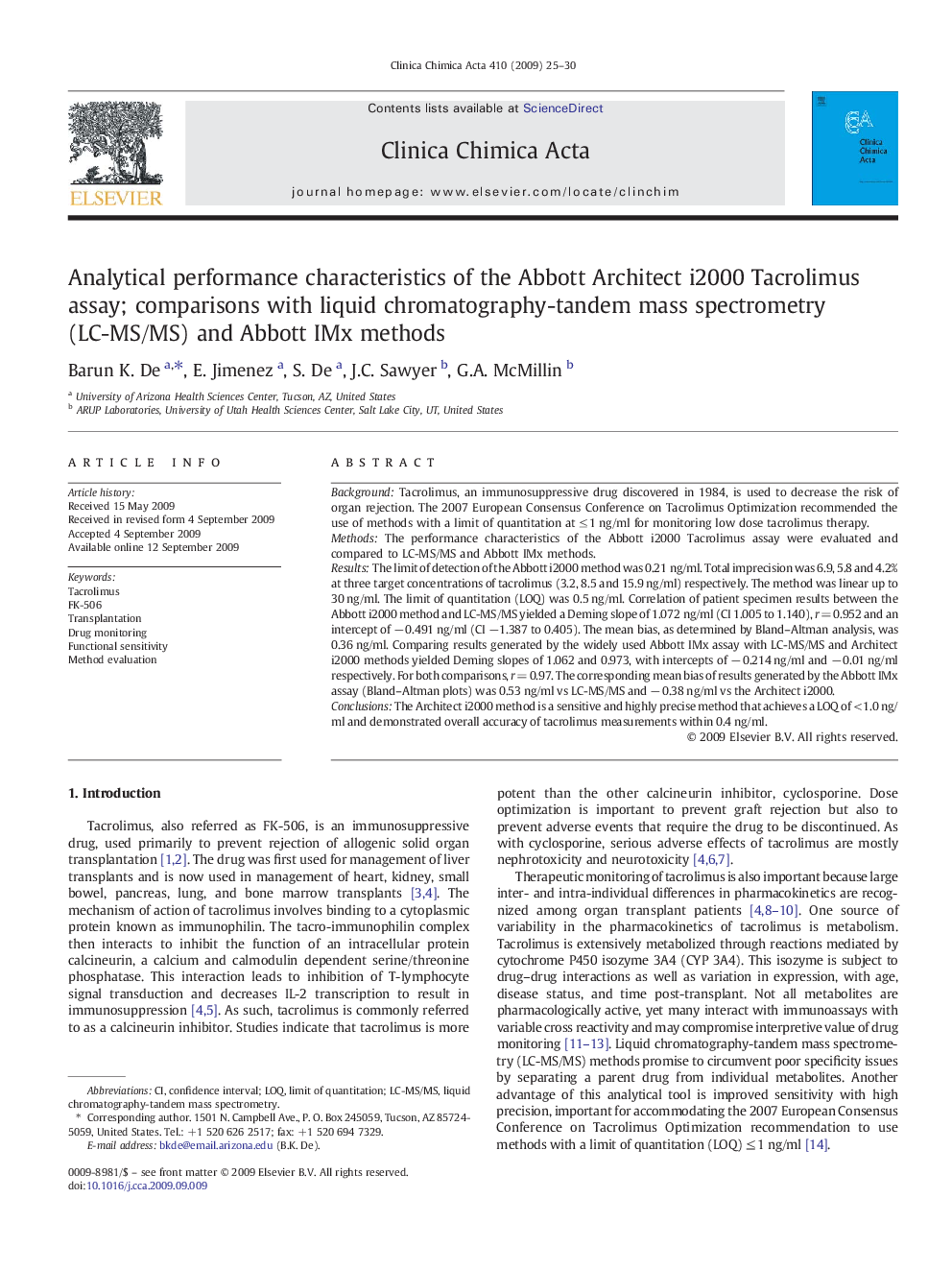| Article ID | Journal | Published Year | Pages | File Type |
|---|---|---|---|---|
| 1966361 | Clinica Chimica Acta | 2009 | 6 Pages |
BackgroundTacrolimus, an immunosuppressive drug discovered in 1984, is used to decrease the risk of organ rejection. The 2007 European Consensus Conference on Tacrolimus Optimization recommended the use of methods with a limit of quantitation at ≤ 1 ng/ml for monitoring low dose tacrolimus therapy.MethodsThe performance characteristics of the Abbott i2000 Tacrolimus assay were evaluated and compared to LC-MS/MS and Abbott IMx methods.ResultsThe limit of detection of the Abbott i2000 method was 0.21 ng/ml. Total imprecision was 6.9, 5.8 and 4.2% at three target concentrations of tacrolimus (3.2, 8.5 and 15.9 ng/ml) respectively. The method was linear up to 30 ng/ml. The limit of quantitation (LOQ) was 0.5 ng/ml. Correlation of patient specimen results between the Abbott i2000 method and LC-MS/MS yielded a Deming slope of 1.072 ng/ml (CI 1.005 to 1.140), r = 0.952 and an intercept of − 0.491 ng/ml (CI −1.387 to 0.405). The mean bias, as determined by Bland–Altman analysis, was 0.36 ng/ml. Comparing results generated by the widely used Abbott IMx assay with LC-MS/MS and Architect i2000 methods yielded Deming slopes of 1.062 and 0.973, with intercepts of − 0.214 ng/ml and − 0.01 ng/ml respectively. For both comparisons, r = 0.97. The corresponding mean bias of results generated by the Abbott IMx assay (Bland–Altman plots) was 0.53 ng/ml vs LC-MS/MS and − 0.38 ng/ml vs the Architect i2000.ConclusionsThe Architect i2000 method is a sensitive and highly precise method that achieves a LOQ of < 1.0 ng/ml and demonstrated overall accuracy of tacrolimus measurements within 0.4 ng/ml.
